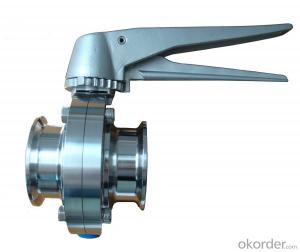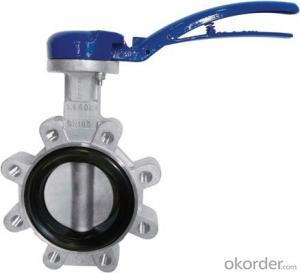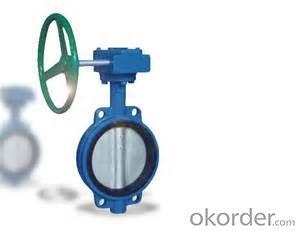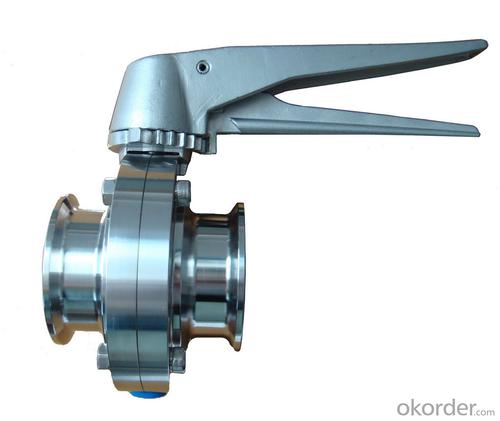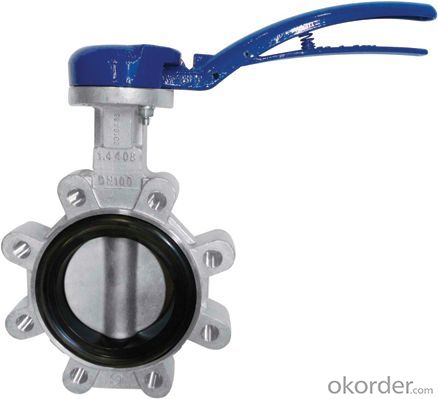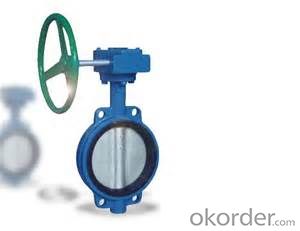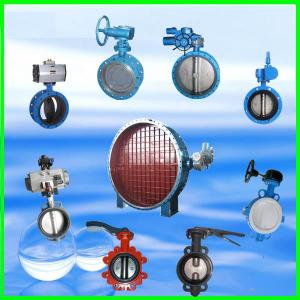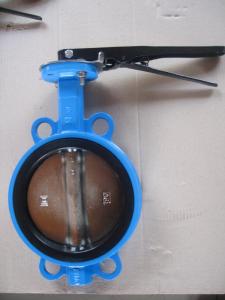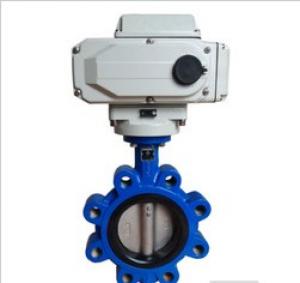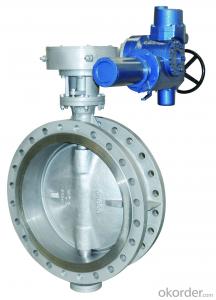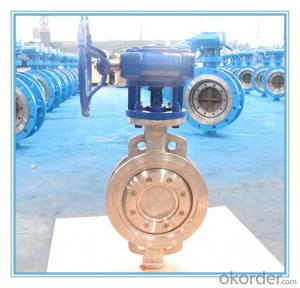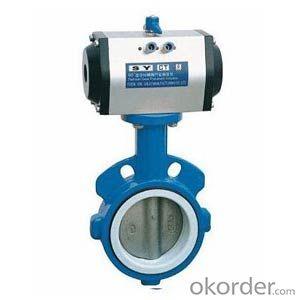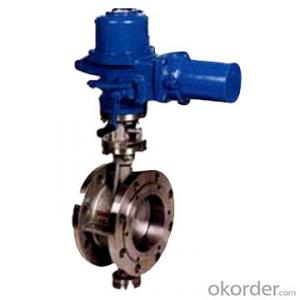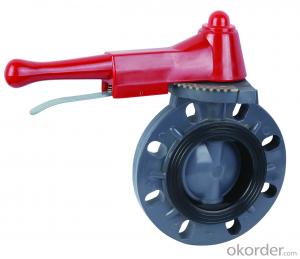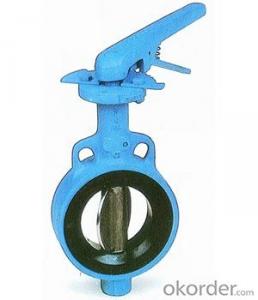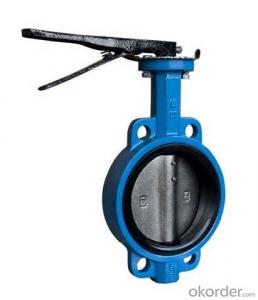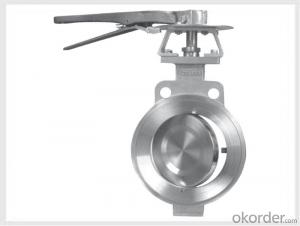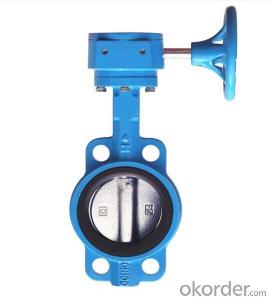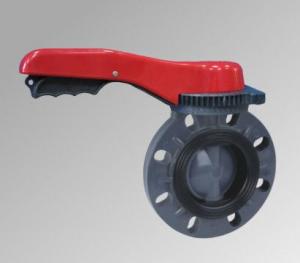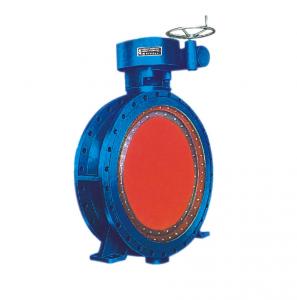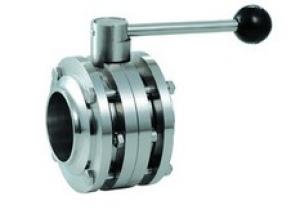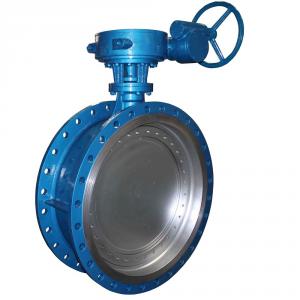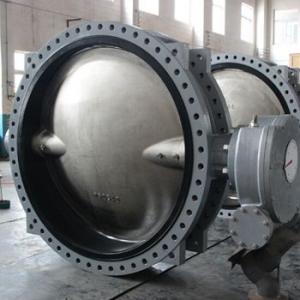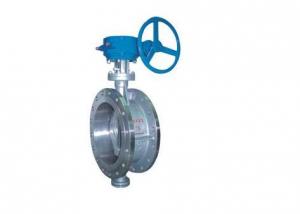Butterfly Valve DN750 BS5163 with Hand Wheel
- Loading Port:
- Tianjin
- Payment Terms:
- TT OR LC
- Min Order Qty:
- 50 pc
- Supply Capability:
- 5000 pc/month
OKorder Service Pledge
OKorder Financial Service
You Might Also Like
1. Manual Wafer Butterfly Valve Description:
A butterfly valve is a valve which can be used for isolating or regulating flow. The closing mechanism takes the form of a disk. Operation is similar to that of a ball valve, which allows for quick shut off. Butterfly valves are generally favored because they are lower in cost to other valve designs as well as being lighter in weight, meaning less support is required. The disc is positioned in the center of the pipe, passing through the disc is a rod connected to an actuator on the outside of the valve. Rotating the actuator turns the disc either parallel or perpendicular to the flow. Unlike a ball valve, the disc is always present within the flow, therefore a pressure drop is always induced in the flow, regardless of valve position.
2.Main Features of the Manual Wafer Butterfly Valve
a)Cast hole. Flange connection meet ANSI 125/150# DIN PN10/16 BS4504 PN10/16 in the meanwhile.
b)Soft seat. Replaceable. Increase of service life.
c)Double half shaft without pin.
d) Square and short neck. Easy to stick scutcheon and cost saving.
3. Manual Wafer Butterfly Valve Images:
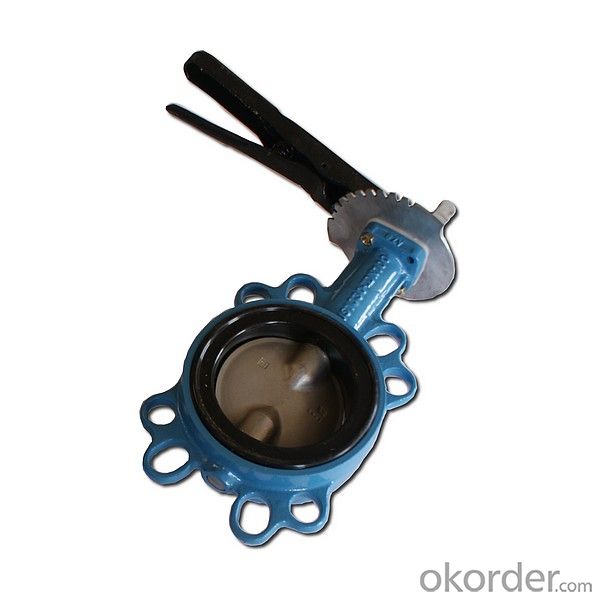
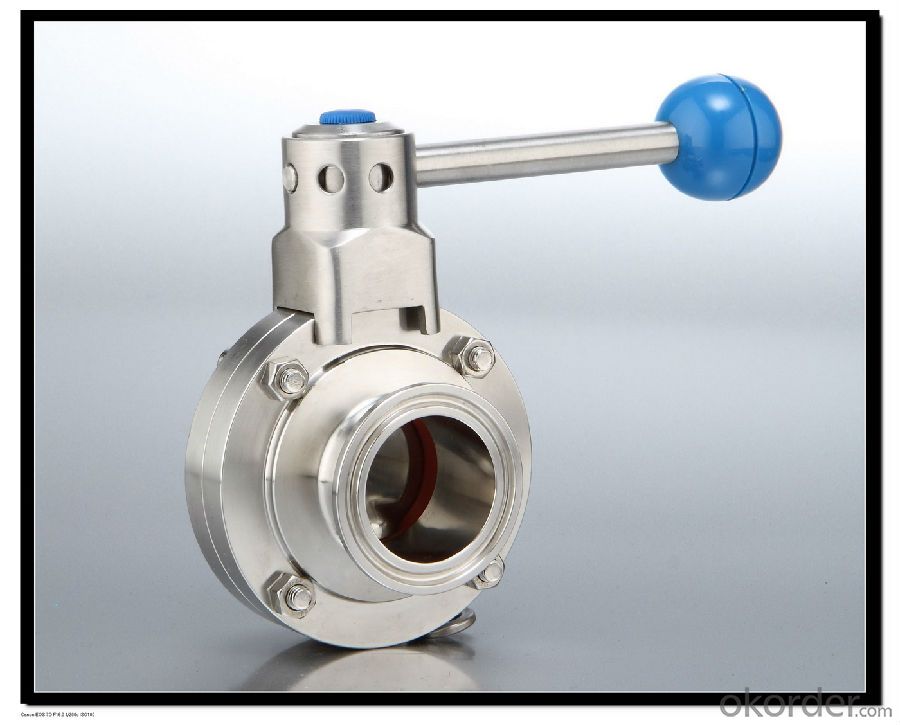
4.Manual Wafer Butterfly Valve Specification:
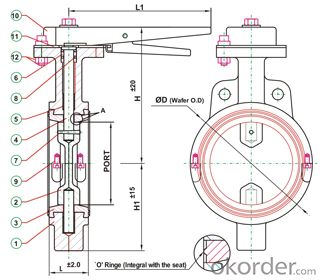
1)Size: DN40-DN1400
2)Material:body-CI/DI/WCB/SS
disc:DI/CF8/CF8M/C95400
3)Professional Maufacturer for more than 10 years
PRESENTATION:
1) Sizes:
DN40mm-DN1400mm
2) Materials:
a) Body: CI(cast iron ,GG25 )/ DI (ductile iron ,GGG40)
b) Disc: DI / CF8 / CF8M / C95400
c) Seat: EPDM / NBR / TEFLON / VITON
5.FAQ
1. What is manual wafer butterfly valve?
A: Wafer style is the more common of the two and is less expensive than the lug style. The wafer style butterfly valve is just about the standard. It ís so common that no one even bothers to use the word "wafer" when ordering a butterfly valve. It is taken for granted that if a butterfly valve is ordered, a wafer style will be received.
2. How about the Installation of the Wafer Style Butterfly Valve?
A: Butterfly valves are installed by inserting the valve between two flanges using bolts or studs and nuts to hold it all together. This type of installation, of course, makes it impossible to disconnect just one side of the piping system from the valve. That benefit is received using the lug style valve.
3. What is the working principle of manual wafer butterfly valve?
A: A butterfly valve is from a family of valves called quarter-turn valves. In operation, the valve is fully open or closed when the disc is rotated a quarter turn. The "butterfly" is a metal disc mounted on a rod. When the valve is closed, the disc is turned so that it completely blocks off the passageway. When the valve is fully open, the disc is rotated a quarter turn so that it allows an almost unrestricted passage of the fluid. The valve may also be opened incrementally to throttle flow.
- Q: Why use special flanges for butterfly valves?
- Butterfly valve to use special flange, butterfly valve itself is because of the structure of the decision, the butterfly valve to clip type connection, this pair of clamps is a special flange.Also known as butterfly valve, control valve has a simple structure, can be used for low pressure pipeline valve switching control is closed parts (disc or disc) is a disk, around the valve axis to achieve the opening and closing a valve, the valve can be used to control the flow of air, water, steam steam, all kinds of corrosive medium, mud, oil, metals and radioactive liquid media and other types of fluid. On the pipeline, mainly from cutting and throttling. Butterfly valve headstock is a disc shaped disc, in the valve body around its own axis of rotation, so as to achieve the purpose of opening or closing or regulation.
- Q: I want to switch off the water in the bathroom only due to replacing sink taps, will water still come out of the pipe if i turn the stop valve
- Water should be off to the sink is the stop valve off
- Q: How much is the Honeywell butterfly DN300?
- Find the agent or find a reliable valve plant a lot of foreign brands are in Chinese OEM so find a reliable factory is relatively good service to keep up
- Q: How do i use a valve spring compressor. It looks like a c-clamp, so don't tell me how to use a smaller one, but the bigger one.Thanks
- The forked end goes over the valve retainer, the flat end with the screw goes against the valve face. Simply close the handle to compress the spring. You may need to adjust the width of the jaws to fit the retainer and adjust the length of the screw to compress the spring the right amount. Sometimes it helps to gently tap the edge of the retainer with a hammer to loosen the keepers before compressing the spring.
- Q: Where are the exhaust valves, mud valves and butterfly valves?
- Chemical plant with colloid, puffed agent and granule. Wine industry, paper industry. Butterfly valves are used in petroleum, chemical, food, pharmaceutical, textile, water and electricity, ships, urban water supply and drainage, smelting, and energy systems as regulating and intercepting devices.
- Q: What is the butterfly valve
- Conclusion: Although the double valve advanced technology, metrology, but must ensure stable and timely flow of materials, in order to achieve good results, so the combination of flotation system and dual use of butterfly valve can fundamentally solve the flow and measurement of powder, so as to rely on self weight principle of materials, so we plant layout the middle of a large number of mechanical equipment to save not only, more important to reduce the cost of investment and running.
- Q: What type of valve does the butterfly valve D343X DN300 represent?
- General valve model specification:D: butterfly valve3: worm gear4: flange connectionX: rubber sealDN300: Valve path 300mm
- Q: DN80 flange butterfly valve, DN80 flange butterfly valve DN80, flange butterfly valve DN80 what is the difference?
- No, what's the difference?. It's not all the same.Flange connectionDN80 caliber butterfly valve. What's the difference?. Model and pressure. Materials are not ~!
- Q: The difference between the directly buried gate and the flange valve and butterfly valve
- Buried gate also called buried gate valve, valve can be directly buried underground, built without manhole, reduce road excavation area; small well maintained road and beautiful room can reduce the difficulty of construction, reduce project cost. The directly buried soft sealing gate valve is divided into two types: telescopic type and fine fixing type, wherein, the telescopic type is divided into metal type and plastic type. In the process of construction, the telescopic type can be adjusted arbitrarily according to the distance between the buried depth of the valve and the ground, and the micro adjustment can be adjusted on the spot. The directly buried gate valve has the advantages of long-term use, no leakage, no maintenance, etc., and can effectively avoid other people switching the valve and stealing the manhole cover at will.Flange gate valve is connected to the flange gate valve, this connection is the most common way.
- Q: Hi guys, i asked a question before pertaining to the amount of cylinders and asking if it meant V4 or V6 or whatever.I actually meant to say VALVES, not cylinders. IS there a direct correlation between VALVES and Clyinders..Eg, My car, which is a 2001 Neon LE states right on the engine block quot;16 VALVEquot; in bright letters. I am sure this is a 4 cylinder engine. I haven't had a car that broadcasted the number of VALVES before. Another car I had broadcast that is was a 3.3 Liter V6 right on the engine.Is there a mathematical relationship between VALVES and cylinders, or would my car be braodcasting 16 VALVES, because a 4 cylinder doesn't typically HAVE 16 valves, or what is the story??Recently, I was looking at an altima, and it said 24 valves. Can you tell just by the number of valves if it is a 4 cylinder or 6 cylinder or whatever??Thanks.
- for every cylinder there is 4 valves..
Send your message to us
Butterfly Valve DN750 BS5163 with Hand Wheel
- Loading Port:
- Tianjin
- Payment Terms:
- TT OR LC
- Min Order Qty:
- 50 pc
- Supply Capability:
- 5000 pc/month
OKorder Service Pledge
OKorder Financial Service
Similar products
Hot products
Hot Searches
